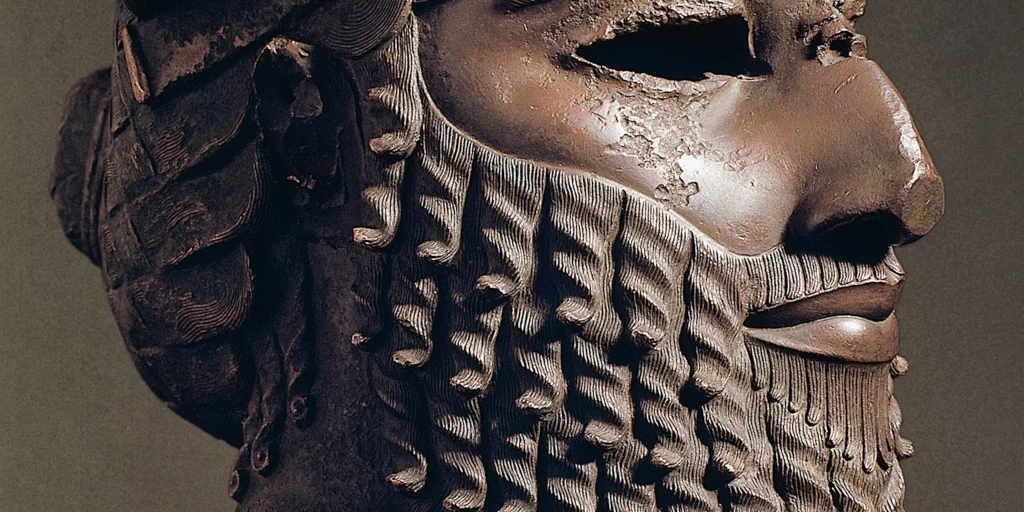His favorite movie was “The Godfather,” and according to his daughter, he tried to envision himself as the modern-day Michael Corleone. He tried to run his business and family the same way. Except this wasn’t fiction; it was real life.
Just like Corleone was the most infamous crime boss in the movies, John Gotti ran the ring in real-life New York in the 1980s. He was at the top of the chain of power.
Many today consider him the all-time king of crime bosses–the “Teflon Don” every capo respected and paid attention to, even more so than Al Capone.
Gotti was the head of the Gambino family. He gave orders to kill people and running an organized caporegime.
After rising through the ranks, he murdered his predecessor Paul Castellano, supplanting him as “Head of the Family.” He escaped numerous charges over the years, using his underboss to tamper with witnesses and hand out bribes, helping get Gotti acquitted.
Eventually, though, this underboss turned on him, leading to the Don’s downfall.
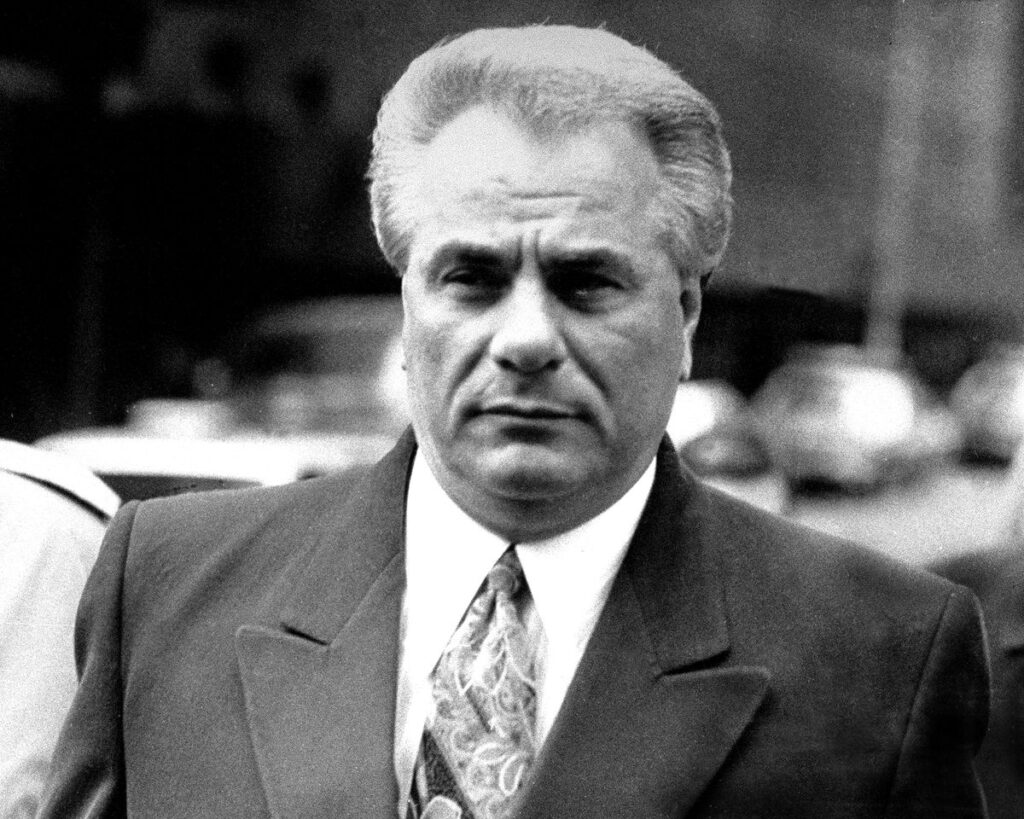
The Early Life of John Gotti
Gotti’s roots in crime started at an exceptionally young age. He was born in the Bronx, New York, in 1940. He moved to Brooklyn’s East Side when he was just 12 years old.
His parents, John and Fannie were both children of immigrants, and young John was the fifth of 13 children. He was born and raised in a working-class family that struggled to make a living in an impoverished neighborhood sector.
At that time in the early 1950s, organized crime and gang activity were growing rapidly around where he lived in New York City. It was hard to avoid.
Before he even turned 16, he found himself as a part of the Fulton-Rockaway Boys group. This was a young gang that ran errands for the social club of the Gambino crime family.
He quickly became attached to his job. By 16, John had dropped out of school and had devoted all his time to work in organized crime.
John wasn’t alone in the family regarding the dangerous business. His brothers Pete and Gene also helped out with the Gambino family.
Aniello Dellacroce took John into the Gambino family at 16 and became his mentor. John married 17-year-old Victoria DiGiorgio when he was just 22 and they quickly began growing their family.
John struggled to avoid trouble with the law early in life. In 1963, he was considered a delinquent when he dodged the Vietnam War draft.
However, when he was questioned in court about it, he used the excuse that because he was married with two children, he did not think he was eligible to fight for his country. Then in 1965, when he was just 25 years old, he was arrested for attempted car theft.
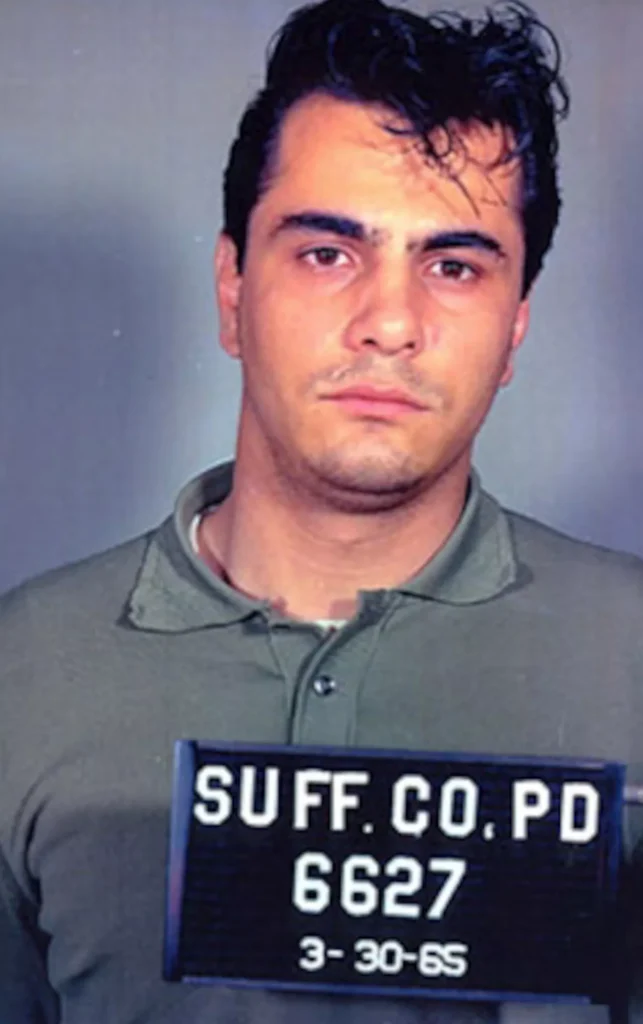
Suspicions Arise
Gotti’s son Frank, 12, was riding a bike at their home in Queens when their neighbor, John Favara, accidentally ran him over. Frank was killed in the incident, devastating the Gotti family.
Favara attempted to apologize for what happened, but instead found himself facing death threats from family and friends of the rising mobster. Victoria attacked him with a baseball bat when Favara tried to apologize for the accident.
Favara had no choice but to move. However, that didn’t cure things for him.
When the Gotti’s went on vacation down in Florida, a hit was put on Favara. He was beaten and shot, then seen being put in the back of a vehicle by a group of thugs to likely dispose of the body. His body was never found.
The police immediately looked at John Gotti and his family as suspects. Gotti simply shrugged it off like any mob member accused of a crime.
“He killed my kid,” Gotti said and denied ever having anything to do with his murder.
This is when suspicions around Gotti began to grow. Before long, Gotti was seen passing through New York streets wearing expensive suits.
In fact, he began to earn the nickname “Dapper Don.” He was rising the ranks in the Gambino family, and before long, he had just one boss–Paul Castellano.
Besides his flashy style, his personality was also his trademark. He had a way about him when the cameras were in front of him. He knew how to act and what to say when the spotlight was on him. When it was off him, he got down to business.
Becoming the Head of the Family
He was known everywhere as “Big Paulie.” Paul Castellano was the head of the Gambino Family, but he didn’t see eye to eye with Gotti.
Castellano didn’t like Gotti’s flashy style or how he secretly dealt drugs, something that was banned in the Gambino family. On the other side, Gotti was tired of Castellano’s greedy ways and thought he was missing out on money by getting involved in drugs.
Delliacroce, still Gotti’s mentor and the family underboss, acted as the buffer. But he could feel the tension rising and Castellano was irate in suspecting Gotti of being involved with drugs.
After Dellacroce had passed from cancer, Gotti felt the pressure from Castellano growing on him. With the FBI beginning to investigate the Gambino family for narcotics, Gotti believed that Castellano was going to kill him and his brothers.
So he decided to make the first move. He organized the murder of Castellano by hiring four men with trench coats. They shot and killed Castellano and his associate in Midtown Manhattan.
After Castellano’s death in 1985, Gotti took over the Gambino family as crime boss. He built the family the way he wanted it to be organized, even including some of his brothers as caporegimes.
He began to openly meet with drug dealers instead of hiding it in secret. This was a sign that Castellano was right about Gotti’s secret dealings.
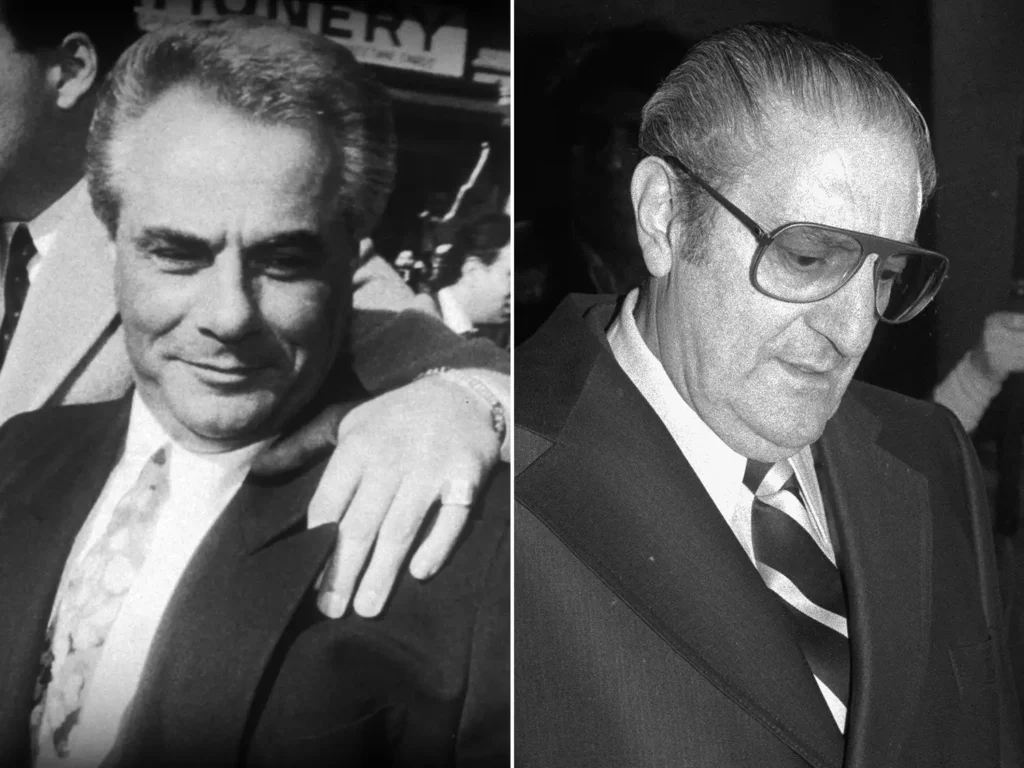
“Teflon Don”
The “Don” is a term that is given to well-respected crime bosses. If anyone has ever seen The Godfather, they will remember the name “Don Corleone.” Gotti earned that nickname after killing “Big Paulie” and was soon referred to as “Teflon Don.”
The main reason he earned that nickname is because he knew how to get out of trouble. After being acquitted in three different criminal trials in the late 1980s, people began to see him as untouchable.
He could get away with murder. Evidence was later produced that his family partook in jury tampering, making threats against any member who sided against Gotti. Money was involved, including with judges.
As an underboss for Castellano, Gotti had proven himself dangerous. In 1973, he posed as a detective only to kill James McBratney, who was accused of murdering mob boss at the time, Carlo Gambino.
In 1974, he was caught but successfully pleaded the charges down to attempted manslaughter. He only served four years in prison.
In a 1986 trial, the man who accused Gotti of assault all of a sudden said he didn’t recognize him after the Gambino family had gotten to him. This led to his acquittal.
Police continued to keep an eye on him, arresting him for racketeering, conspiracy, and murder, but Gotti always found his way out of it, getting the charges dropped. He had the right people working for him, and he began to become as untouchable as Michael Corleone.
In 1987, he was on trial again for federal racketeering and conspiracy. But just like all the other cases, he found a way out and was acquitted of the crime. His confidence in avoiding prison just kept growing.
”They’ll be ready to frame us again in two weeks,” Gotti said. “In three weeks we’ll be starting again, just watch.”
Gotti was again arrested for assault and conspiracy. Knowing the outcome, he told the officers, “Three to one I beat this charge.”
Gotti did; thanks to underboss Sammy “The Bull” Gravano, who had intimated witnesses and bribed them with large sums of money. Gotti was acquitted and a free man.
Gravano Betrays Gotti
Many around Gotti began to feel he was getting too confident in his illegal dealings, thinking that no matter what he did, he could find his way out of it. This eventually would lead to his downfall.
The FBI and law enforcement agencies kept their distance from him while putting together a massive investigation to try and bring him down. They had found out from their investigations that Gambino was bringing in upwards of $20 million in illegal money as a mob boss.
The FBI secretly planted recording devices around Gotti’s Ravenite social club. They were hoping that they could get the information they needed to bring him down for good.
They had enough evidence from the recordings to bring down Gotti. On Dec. 11, 1990, Gotti was arrested and charged with murder, illegal gambling, bribery, tax evasion, obstruction of justice, and loan sharking.
They also arrested Gravano. When they brought him in for questioning, they had a plan to use him to get to Gotti.
The FBI knew that in order to win a trial, they had to have somebody rat Gotti out. After all, they knew from past trials that the Don had a way of getting acquitted.
In one of the recordings, they heard Gotti drop Gravano’s name and then brought Gravano in and played the tape to him. The recording included Gotti making threats against his underboss, making disparaging remarks about him, and making Gravano believe his life was on the line.
Gravano was questioned and admitted to 19 murders he committed upon the request of the Don. In exchange for his confession, the FBI would only give Gravano five years in prison if he helped them bring Gotti down, working as an informant.
The FBI Gathers Proof
Gravano’s information was exactly what the FBI was looking for. They got rock-hard proof of at least five murders Gotti was directly involved in, including that of Castellano.
He turned over all kinds of evidence that implicated Gotti. He then agreed to testify against him in a trial, which took place in 1992.
Gravano spent nine days on the witness stand explaining the crimes that his boss was responsible for. He claimed that the murders were orchestrated to assert his power and to avoid being killed by Castellano for illegal drug sales.
Gravano also claimed he was in the car with Gotti at the time Castellano and his associate Thomas Bilotti were being murdered. Gotti told Gravano that if the murders went wrong, he was the “backup shooter.”
The jury was kept in complete protection during this trial, with eyes on them at all times and no one able to get to them, eliminating any chance of tampering or bribery. After 14 hours of deliberating, the jury concluded that Gotti was guilty of five murders along with other crimes he was charged with.
The judge sentenced him to life. “The Teflon is gone. The Don is covered with Velcro,” Jim Fox said, the FBI’s New York head.
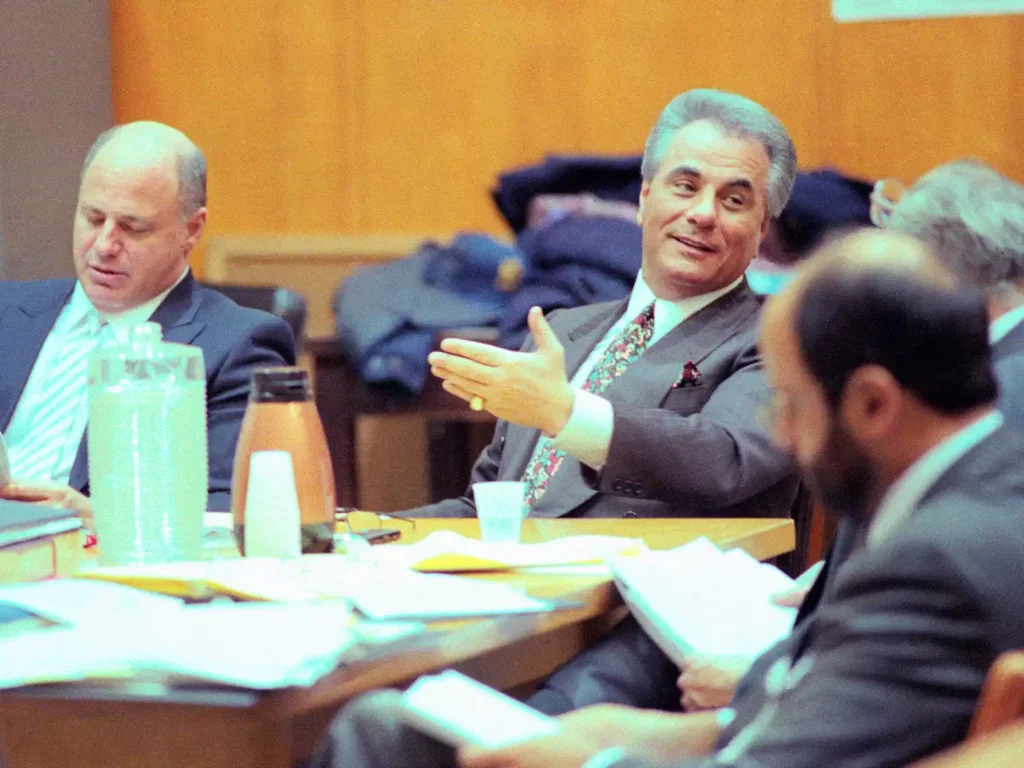
Life and Death in Prison
Despite many appeals, Gotti was denied a new trial or early release from prison. Eventually, he got throat cancer, leading to his death in a Springfield, Missouri prison hospital on June 10, 2002.
This was 10 years after he was sentenced. Gotti was 61 years old.
Gotti’s funeral was massive, something like out of the movie “The Godfather” when Vito Corleone was laid to rest. Nineteen limousines were used simply for flower displays and souvenirs, while another 22 were used for family and friends attending the funeral.
Gotti was buried in St. John’s Cemetery in Middle Village, NY, the same cemetery where Dellacroce and Carlo Gamino were buried. But just because he had passed, didn’t mean the business stopped.
His son, John Gotti Jr., took over the family business. However, he struggled to evade the law just like his father. He was implicated in racketeering and spent more than six years in prison.
Gotti Jr. continued to battle the law, facing more racketeering charges in the future, but he was able to fight them off, getting a mistrial. While Gotti Jr. was accused of being an informant, a reason for him getting lucky with the law, he denied it and said he constantly fed the federal government false information.
References
Sager, Jessica. “John Gotti: What to Know About the Life and Death of the Infamous Crime Boss.” People.com. 25 Oct 2023. https://people.com/john-gotti-what-to-know-about-infamous-mob-boss-8367409.

